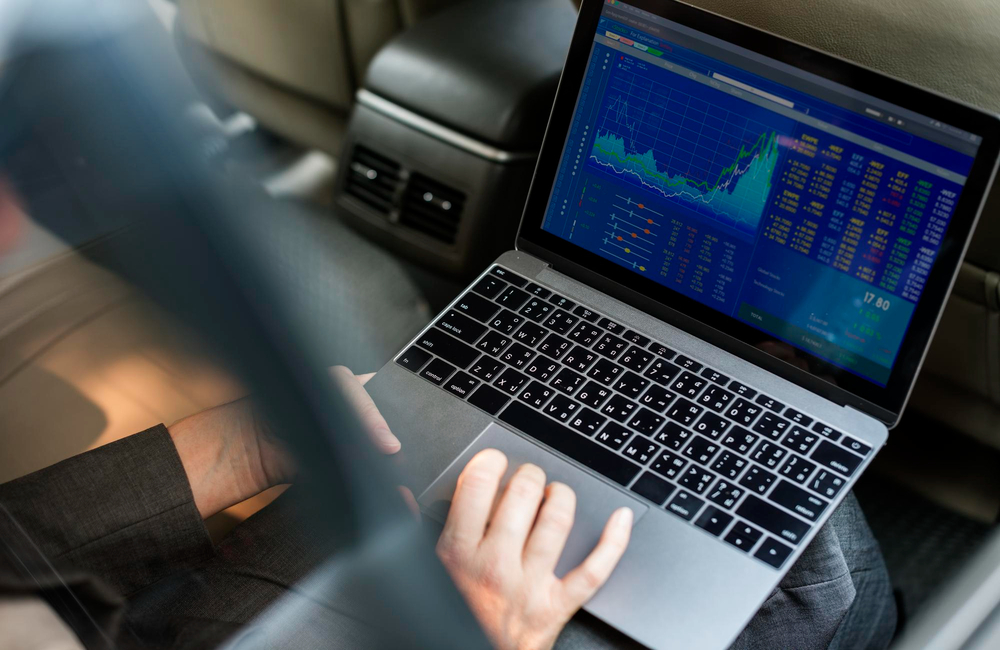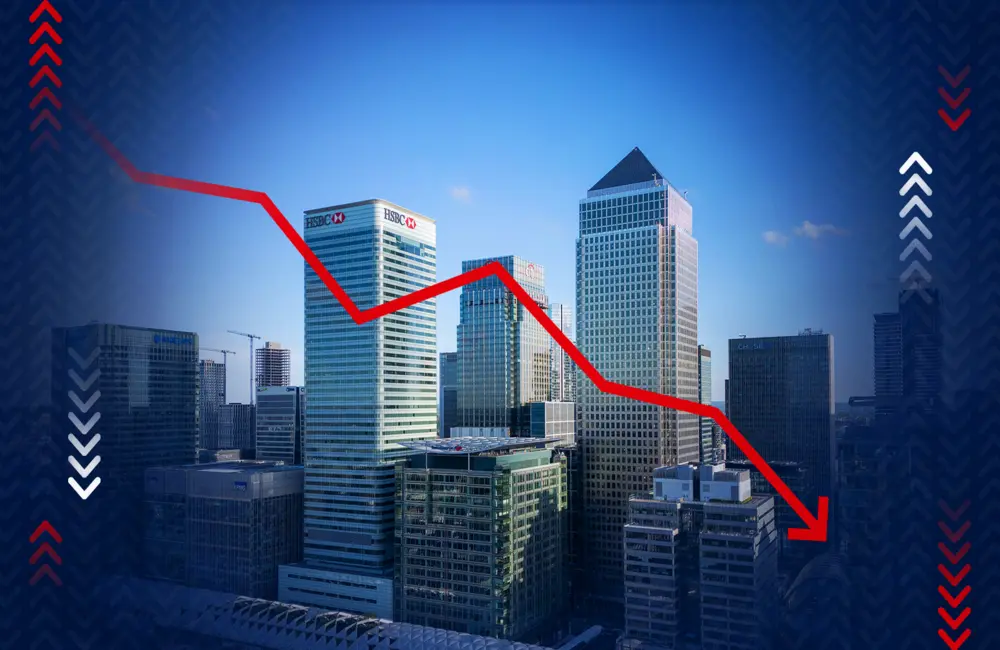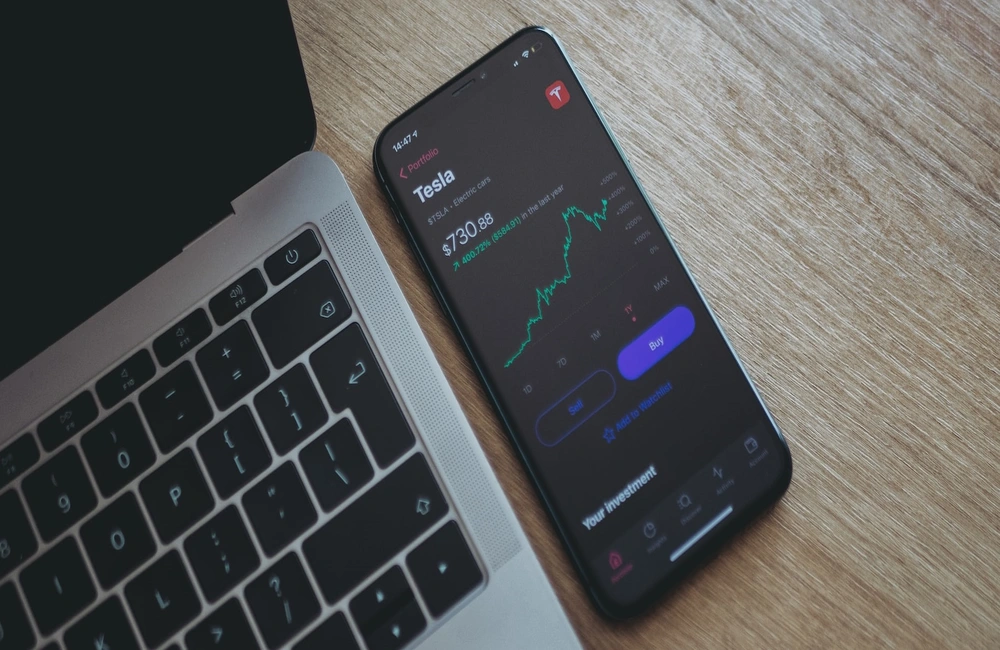ASX futures rose 38 points or 0.5 per cent to 7413 by 8:00 am AEST, indicating a bright-evening start and the potential of a sixth straight gain, the longest in more than two months.
The S&P 500 rose 0.7%, led by stocks in consumer discretionary, technology and real estate. Energy stocks were the biggest decliners in the benchmark. The tech-heavy Nasdaq Composite climbed 1.3%, and the Dow Jones Industrial Average ticked up 0.3%. The moves were part of last week’s rebound; stocks climbed for a second week in a row.
International oil prices fell sharply overnight as pandemic restrictions in Shanghai sparked fears of demand destruction. Brent Crude fell 9.3% to US$109.40. Concerns about supply disruptions have kept oil prices above US$100 since Russia’s invasion of Ukraine, fuelling fears that higher energy costs could pile on inflation and dent growth.
In Australia the S&P/ASX 200 added 0.1% on Monday to 7412.4, with shares of big-cap mining companies and banks lifting the benchmark for a fifth straight gain. The winning streak tied the ASX 200’s longest of 2022, which had been achieved through March 3.
Fortescue Metals finished 0.8% firmer, while Rio Tinto and BHP rose 1% and 2.3%, respectively, on higher iron ore prices.
Banks Commonwealth, ANZ, NAB, Macquarie and Westpac gained between 0.2% and 1.2% after expectations for interest-rate hikes firmed.
Blood-products maker CSL was the only one of the nine biggest companies by market capitalization to fall, dropping 1.1% and dragging its sector lower.
The star entertainment group’s chief executive, Matt Bekier, resigned on Monday after problems identified in a review of the company’s Sydney casino license.
The pandemic disrupted Australian business conditions and confidence in the first quarter, and supply-chain blockages and rising input prices were further aggravated due to the war in Ukraine, according to a survey by National Australia Bank. The tech sector was the worst performer, down 2.7% as Block, WiseTech and Xero lost between 3.7% and 5.2%.
In commodities, iron ore added 0.1% to US$152.40 a tonne; gold futures fell 0.8% to $1944.70.
US bonds yields retreated from all-time highs on Monday as local government debt continued to unwind. The US 10-Year Treasury Note yield has declined to 2.46%. The Australian 10-year bond yield soared to 2.90%. Yields rise when prices fall.
The Aussie dropped from a one to five-month peak hit yesterday, fetching 74.90 US cents at 8:00 am AEST, down from 75.14 at the previous close. The WSJ Dollar Index, which measures the buck against 16 others, soared to 91.84.
Asia
Chinese stocks finished solidly lower amid a simmering row between China and the US over the war in Russia-Ukraine. The Shanghai Composite Index gained 0.1% and the Shenzhen Composite Index declined 0.8%, while the ChiNext Price Index dropped 1.7%. Airlines dragged shares down, after news of a lockdown in Shanghai as the number of Covid-19 infections crept higher in the world’s most populous country. Air China dropped 3.2%, China Eastern Airlines shed 3.9%, while China Southern Airlines was 0.8% lower. “A deteriorating Covid-19 situation in China, and broader restrictions across the country, would be a significant drag for Asian equities overall,” Oanda says.
Hong Kong’s Hang Seng Index ended the day up 1.3 percent, as gains in tech stocks offset losses in REITs. Meituan was the top performer, surging 12% on better-than-expected 4Q earnings despite the current wave of Covid-19 infections in China. Other tech stocks rose as well. Alibaba Group rose 3.4% while AAC Technologies gained 4.9%. In REITs, Link Real Estate Investment Trust dropped 0.1% and Wharf Real Estate Investment dipped 0.3%. Global air travel remains closely tracked after Hong Kong said it would cut in half the suspension of flights caused by Covid-19 cases.
Japanese stocks fall, dragged by weakness in chemical and electronics stocks, amid ongoing concerns about the war in Ukraine and rising raw-materials costs. Nippon Paint Holdings is down 5.7% and Lasertec falls 2.8%. The Nikkei Stock Average Dow dippes 0.7%. The 10-year Japanese government bond yield rose 1.5 basis points at 0.250%, its highest since January 2016. That forced the Bank of Japan to join fixed-rate operations to cap further increase in the yield. Investors are focused on the war in Ukraine and its impact on international trade.
Europe
Most European markets rose as investors looked for some progress in ongoing talks between Russia and Ukraine. The pan-European Stoxx Europe 600 rose 0.1 percent on Monday. “European markets start the week on the front foot, indices rising thanks in part to softer commodity prices, and confirmed discussions between Ukraine and Russia.” “And of course we shouldn't expect any real progress [from additional discussions between the two countries]. But the fact that they still happen gives hope that we’re going in the right direction.”
In London, the FTSE 100 ended down 0.1 percent, even as optimism over talks between Russia and Ukraine that had driven gains earlier in the day faded. Reckitt Benckiser Group PLC was the index’s biggest gainer, while Rolls-Royce Holdings PLC was the heaviest loser. Russia’s benchmark MOEX index declined 2.2% on Monday in a shortened session during which Moscow allowed all Russian shares to be traded. Foreigners are still barred from selling shares, which is helping support the benchmark’s level.
North America
U.S. stocks ended slightly higher after a choppy session and bond yields stood near their highest in three years as investors braced for a string of interest-rate increases from the Federal Reserve.
The S&P 500 rose 0.7%, driven by consumer discretionary, technology and real-estate stocks. Energy stocks were the biggest decliner on the benchmark. The tech-heavy Nasdaq Composite gained 1.3 percent, and the Dow Jones Industrial Average was up 0.3 percent. The moves came after last week’s rebound, with stocks climbing for a second straight week.
Fed officials have also recently indicated that they would be open to the central bank making half-percentage-point interest rate increases if that is warranted to reflect economic conditions, rather than the quarter-percentage-point adjustments that are the norm. This has forced economists and investors to reassess how quickly they foresee rates rising.
As an era of easy-money policies winds down, markets may face a bumpy road ahead, Jeff Schwaber, chief executive of Bluerock Capital Markets, observed “Investors will now be put more to a test with regard to capital preservation and portfolio positioning than they have been in decades,” Mr. Schwaber said.
The yield on the 10-year Treasury note fell to 2.476 percent, and the 2-year Treasury note rose to 2.340 percent. Investors are watching for the prospect of a so-called yield inversion, when the two-year note yields more than the 10-year, which has historically been followed as a potential gauge of recession.
Meme stocks climbed, with GameStop gaining $37.64, or 25 percent, to $189.59. AMC Entertainment Holdings rose $9.09, or 45 percent, to $29.33, for its largest percentage gain since last summer.
Tesla jumped $81.20, or 8%, to $1,091.84 after the electric car maker announced it would seek approval from shareholders at its annual meeting to increase the number of shares of the company to enable a stock split. In other stock news, Apple rose $0.88, or 0.5 percent, to $175.60. It was the stock’s 10th straight daily advance, its longest winning streak since 2010.
Oil prices declined after Shanghai announced tight pandemic restrictions that may dampen energy demand in China. Brent crude futures, the international benchmark, fell $8.17 a barrel, or 6.8 percent, to $112.48.
Worries about how Russia’s conflict with Ukraine will disturb energy generation has kept oil prices in the last couple of weeks at roughly $100 a barrel. Higher prices have also fueled worries that consumers will have less money available for nonessential purchases, a drag on growth.
The energy sector of the S&P 500 fell 2.6%. The sector has been the benchmark’s best-performing this year to date, but analysts said that a dwindling demand outlook could dull the rally.
“The market is currently pricing in that [higher energy prices] will temper the pace of growth and lead to central banks tightening,” Mike Bell, global market strategist at J.P. Morgan Asset Management, said. The extent to which central banks could raise rates may depend on global growth, and whether rising energy and oil prices are forcing the need for lower rates to cushion growth, he added.
Futures on the federal funds rate derivatives that traders use to gamble on the course of interest rates indicate that investors have significantly increased bets that the Fed will opt for a half-percentage-point increase at its May meeting from a week ago.
In cryptocurrencies, bitcoin’s dollar price gained 4% from its 5 p.m. New York price on Sunday, to $47,916.

























